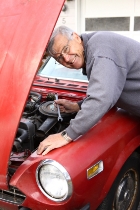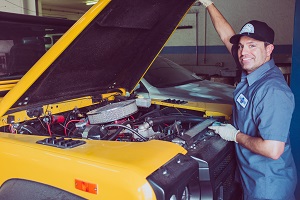 Vehicles built in the past 10 years, with careful attention, should be able to operate efficiently, even after the odometer ticks over 200,000km. Granted, there may be some replacement parts and potentially significant costs involved, but if you would like to see your car to the end of its natural lifespan, here are the things to be mindful of:
Vehicles built in the past 10 years, with careful attention, should be able to operate efficiently, even after the odometer ticks over 200,000km. Granted, there may be some replacement parts and potentially significant costs involved, but if you would like to see your car to the end of its natural lifespan, here are the things to be mindful of:
Service regularly
Servicing your vehicle is the best way to identify wear and tear in the engine and structurally, before damage occurs. Keep to the service schedule and heed the advice of a trusted mechanic and your owner’s manual in terms of when to replace parts.
Keep rust at bay
The greatest enemy of the high-mileage vehicle is rust. Rust interferes with the structural integrity of the vehicle, compromising its safety, and it’s unsightly as well. Part your car in a garage or carport where possible and protect it with polish, as well as washing regularly to remove salt or any other corrosive substance.
Take care of all the surfaces, inside and out to prevent unnecessary deterioration due to dampness, mould, or other dirt. Replace wiper blades and rubber trims as they perish through exposure to the elements.
High-mileage additives
There are a number of engine additives on the market, designed specifically for high-mileage vehicles, which will lengthen the life of your engine and target specific areas of wear.
Be prepared to invest
At 100,000km, there are a number of major parts which require replacement (e.g. cambelt/timing chain/some automatic transmission parts). At 200,000km, these will most likely need replacing again. As these are expensive items, it is important to weigh up the investment you will be making to keep your car running, given that it will not add value.
Enjoy your car
If your car is truly ‘part of the family’, love and care for it, and enjoy many years of motoring on the same set of wheels!










phun83179 - 7 years ago
I bought a 1999 Nissan Maxima A32 3.0 litre V6 12 years ago. It had just under 100,000 on the clock. It now has 226,000, and is still doing the same MPG on the open road as it did then. I get 32 to 34 MPG on the open road by driving steadily and not suddenly accelerating, pulling away from a stop too fast etc. I have it serviced at 10,000 Km, rotate the tyres at 10,000, and check the oil/water etc about once a week.
The only things I have had to do are a new radiator, new starter motor armature and a new coil pack. I have had one new battery in 12 years. I wash it with a quality wash and wax product and it is kept in the carport when not in use. I replace the wiper blades every 18 months – two years. These are a quality blade, not some “cheapy” product.
Without doubt it is the best car I have ever owned. I have had 5 cars in 50 years (all bought secondhand), but none of the others come near it for reliability, driveability and just generally a joy to drive. I buy quality tyres, my last set lasted just under 60,000Km. I never replace just one or two tyres, always a complete set, and never retreads or secondhand as in the past I have had trouble with them.
About once a week I check that the tyres, lights, indicators are working at the same time I check the oil and water.
If you pay attention to the condition of your car, it will repay you with reliability and a long life. Most modern vehicles, if properly serviced and looked after will easily do well in excess of 500,000km.
So look after your ride and enjoy your drive!